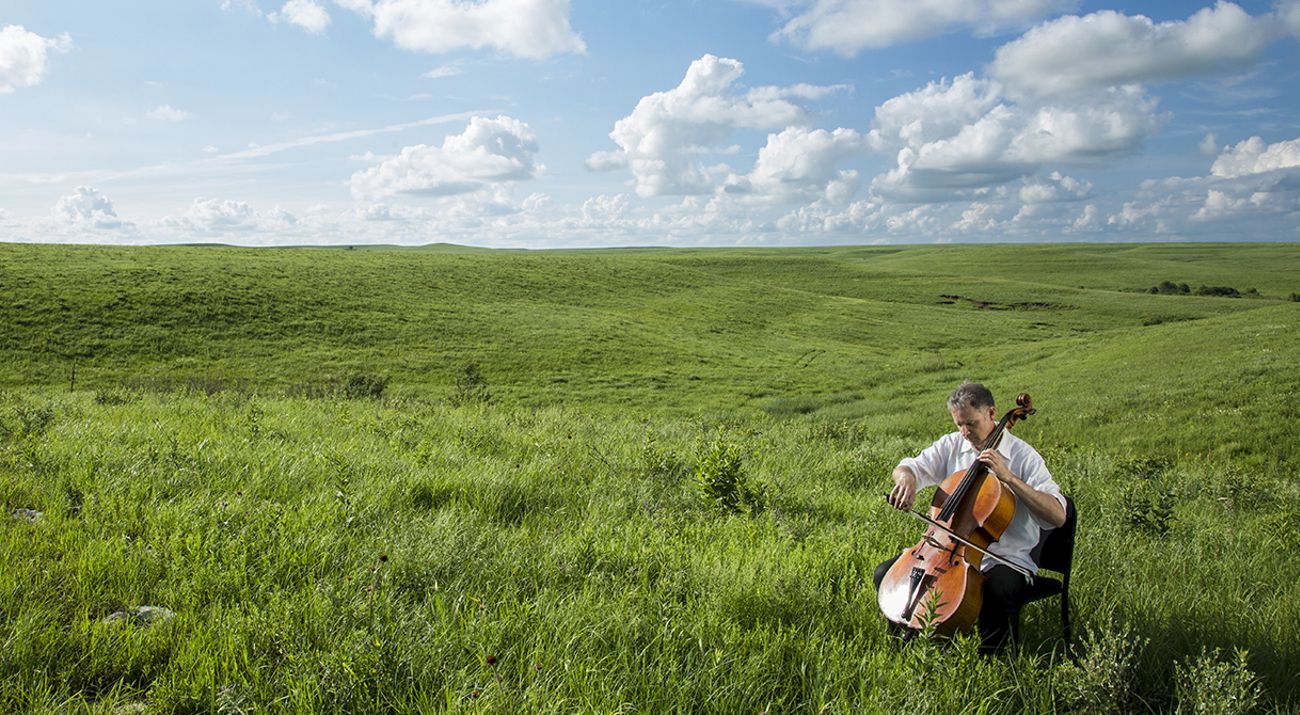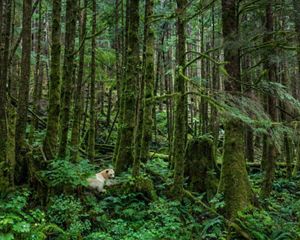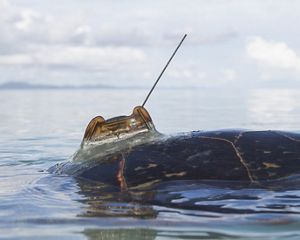Tallgrass Serenade
For one long day every spring, a symphony rises out of the Kansas tallgrass prairie, helping reconnect people to a now rare landscape.
December/January 2015
From atop a hill on the Tallgrass Prairie National Preserve, the echoes of a symphony that has been playing here in the Flint Hills of Kansas for more than 12,000 years can still be heard. The music is complex and ever-changing, roaring allegros of winter winds, sonatas of fire-devouring autumn grasses, a vast composition of renewal and burgeoning. It’s a seemingly endless movement of cicada and katydid, big bluestem and Indian grass, rambling bison, northern bobwhite, horned lark and poorwill, and it was once the dominant, unyielding sound of America’s heartland.
I sit on a spine of limestone ridge after a late-morning hike, pondering the ways that the native species have found respite in a world of massive change. The rocks that jut through the ground’s surface halted the plows of homesteaders and saved this nearly 11,000-acre piece of the Flint Hills as one of the last places where the tallgrass orchestra still plays in full rhapsody.
On a much more human scale of time and music, for the past 10 years another symphony has played here in the Flint Hills for just one evening in late spring. From my perch, the setting up of this event is a surreal vision against the prairie: Oceans of white canvas rise in the distance, and small armies of workers assemble tents and haul sound equipment.
The invitation to attend this event in the wild and teeming grassland interested me, but I did not understand exactly what the draw could be. A symphony? Out on a nature preserve more than an hour away from any major city? With Lyle Lovett accompanying? It sounded a bit too random to succeed. But I was curious.
What I could not have anticipated was the kind of momentum the event has gathered. Within 40 minutes of going on sale, all 5,000 tickets had been purchased, with general admission at $50 to $90 apiece. It was the kind of stampede one might expect for a rock ’n’ roll band at the height of its fame. Yet this was for a symphony orchestra. Even the limitedaccess seminars presented by prairie scientists from around the world, rock stars of their profession, sold out. Clearly, there was something going on here, something powerful.
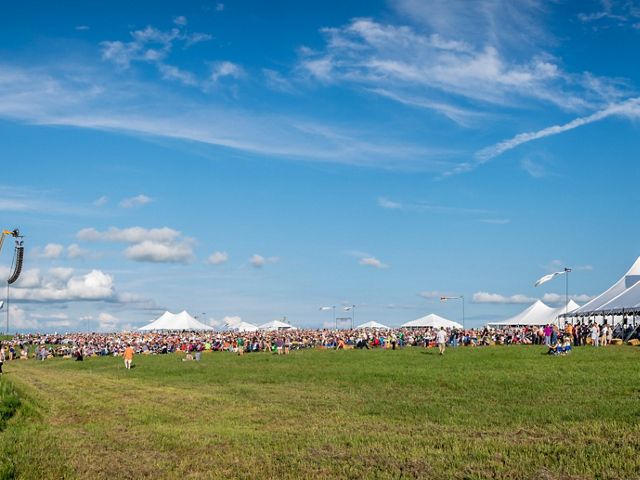
The Tallgrass Prairie National Preserve feels massive, but it protects only a shred of an ecosystem that once covered 170 million acres of North America. “We are down to less than 4 percent of that now, and a lot of the best of what is left is right here,” says Ruth Palmer, a native Kansan who has worked to protect prairielands for The Nature Conservancy for 18 years. Almost all of the tallgrass prairie, she says, was long ago converted to farmland and other uses. In 1996, Congress approved this preserve—a national park dedicated solely to the tallgrass prairie ecosystem—to be jointly run with a private partner. But by 2004, that partner had decided to sell more than 10,000 acres to pay off debt and other liabilities, Palmer says. At the request of then-governor Kathleen Sebelius, The Nature Conservancy stepped in to help, and today the preserve operates as a joint venture between the National Park Service and the Conservancy.
The Symphony in the Flint Hills dates back to 1994, says Christy Davis, the event’s executive director. That’s when prominent local rancher Jane Koger gathered together several thousand friends, family and assorted revelers on her land for an epic celebration of her 40th birthday. After the success of that party, other small concerts popped up around the area, gathering momentum, acclaim and fans.
The present incarnation—the annual one-day Symphony in the Flint Hills—began in 2006, here on the Tallgrass Prairie National Preserve. It has taken place each June and moves to a different part of the Flint Hills region each year. This year, the organizers brought the whole party back to the place of its beginning for a 10th-anniversary celebration. The star is the tallgrass prairie itself.
“We’ve known for a long time that symphony music, in this setting, is a profound way to inspire an emotional response to a landscape,” says Davis. “There is something real here, and I think that is why this all works in such a powerful way.”
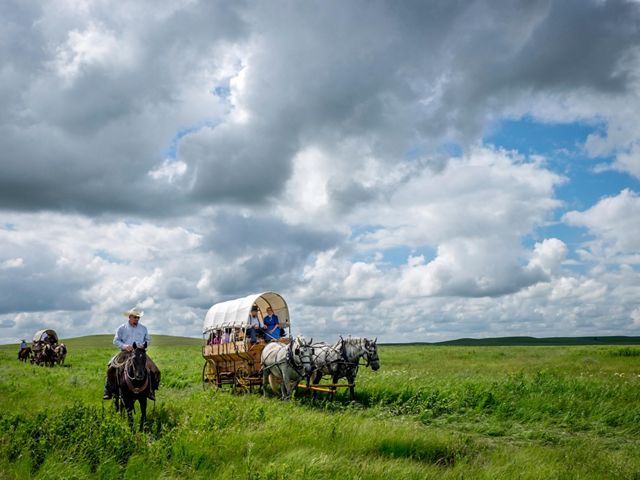
Part of that power is the uncertainty of holding any outdoor event, small or large, in the Midwest. Earlier this morning, the day of the symphony, the schizophrenically violent weather of the Kansas spring bombarded the concert site: bearing down, then clearing, then hammering rain and thunder, then clearing again. But Kansans possess an unparalleled optimism and boldness in the face of the region’s notorious storms: Everybody just kept on working. Guy wires on tents and sound equipment were tightened. Hay was thrown on mud. At 9 a.m., the rain stopped, and the heat that normally builds afternoon thunderstorms gave way to a cool breeze and high clouds. The show would go on.
All day people keep coming in, on foot up the trails and riding on long trailers and wagons, carrying folding chairs and blankets and pushing jog-strollers with sunscreen-slathered babies inside. The crowd mirrors the tallgrass, diverse and colorful. Men and women on horseback ride along the trails, offering directions or advice as needed. The day’s festival features art exhibits, storytellers, skilled working cowboys. The sun continues, and some in the crowd are visibly reddening, but this is Kansas and nobody complains. Children sweep by in remarkably well-behaved gaggles, some of them hiking out through the prairie to sit on rocks and gaze at whatever is there.
At the Grasslands of the World tents, scientists from the Conservancy and other organizations speak of the Chihuahuan desert plains, Mongolia’s Eastern Steppe, and the Brazilian cerrado. Their diverse audience includes ranchers and others in the cattle business as well as folks wearing T-shirts bearing the logos of land trusts. A local man in the crowd wearing a white Stetson explains to one presenter that here on the Kansas tallgrass a cow can put on as much as 3.2 pounds per day. Such is the power of the native grasses. Everyone, including the grassland scientists, marvels at that.
The day’s waning light—and music and poetry—brings the crowd near silence at the huge saddleback tent covering the main stage. The orchestra’s first notes create a kind of emanation of the place. Layers of strings and brass have an ethereal presence in this setting, as if the musicians are channeling the energies all around them and giving them voice in a compressed language spoken in some part of the human soul. In hushed tones between pieces, the weather is discussed—never in the history of the event has the air been so cool, so easy.
The yawning vistas all around us glow emerald green, and cattle being pushed along by a band of riders on horseback are almost red in contrast to the grass. A small herd of bison graze, black figures in the twilight distance. A short hour or so into the performance, Lyle Lovett sings a quietly powerful version of “Home on the Range,” and the crowd joins in strong, without irony, without comedy. The song, written by Dr. Brewster M. Higley VI of Smith County, Kansas, in the 1870s, is the Kansas state song and here plays like an anthem of the tallgrass. With the song rising around me, I am no longer an outsider, or a visitor. This is the heartland of our nation, right here on this quietly spectacular expanse of native prairie.

The morning after the concert, Palmer and I hike up from Palmer Creek (no relation), a thin tumble of crystalline water in the north of the preserve. We walk through a high plateau lit with showy orange flowers and a haze of purples—penstemon, breadroot scurf pea, wild alfalfa. In the distance the symphony tents stand shocking white in the green expanse, already disappearing as they are being taken down, ephemeral as a snowfall. The celebration is over, and only a few hikers remain out here with us, traveling as people have done here for thousands of years, in silence. I now understand what brings so many here each spring. Across Kansas, across America, people who were here yesterday are carrying home the restorative elixir of this place, music and sky, native grass and poetry, weather and song. Enough to last them for another year.
Want to visit? The Symphony in the Flint Hills is held at a different site every year. The next event will take place on June 11, 2016, at a private pasture in Chase County, Kansas. Tickets will go on sale—and sell out quickly—in early spring.
